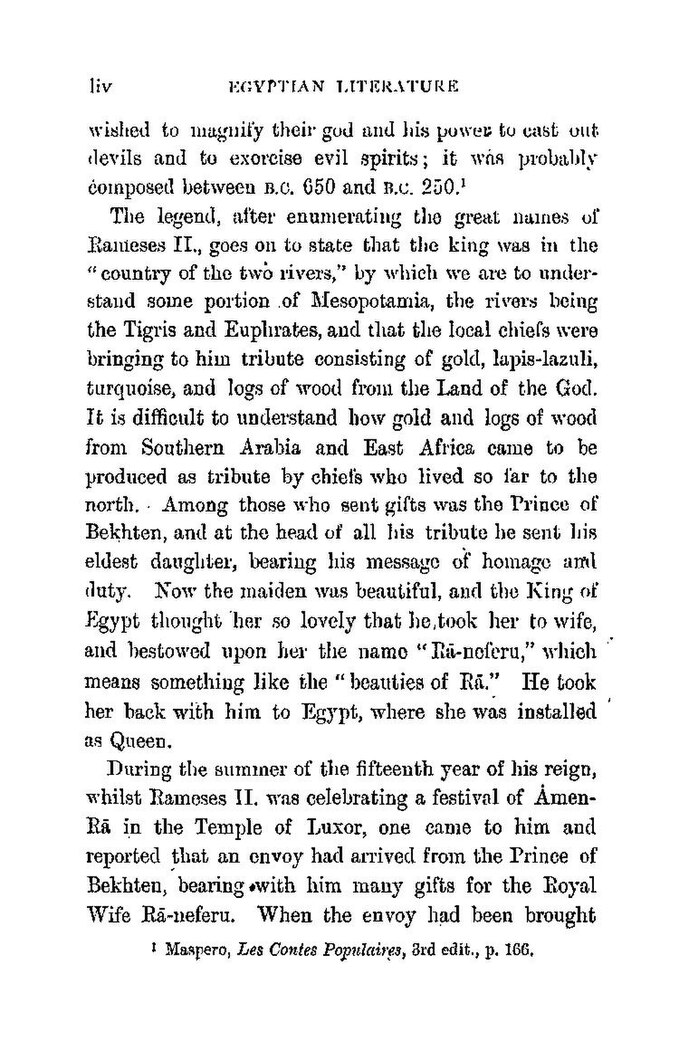wished to magnify their god and his power; to cast out devils and to exorcise evil spirits; it was probably composed between B.C. 650 and B.C. 250.[1]
The legend, after enumerating the great names of Rameses II., goes on to state that the king was in the “country of the two rivers,” by which we are to understand some portion of Mesopotamia, the rivers being the Tigris and Euphrates, and that the local chiefs were bringing to him tribute consisting of gold, lapis-lazuli, turquoise, and logs of wood from the Land of the God. It is difficult to understand how gold and logs of wood from Southern Arabia and East Africa came to be produced as tribute by chiefs who lived so far to the north. Among those who sent gifts was the Prince of Bekhten, and at the head of all his tribute he sent his eldest daughter, bearing his message of homage and duty. Now the maiden was beautiful, and the King of Egypt thought her so lovely that he took her to wife, and bestowed upon her the name “Rā-neferu,” which means something like the “beauties of Rā.” He took her back with him to Egypt, where she was installed as Queen.
During the summer of the fifteenth year of his reign, whilst Rameses II. was celebrating a festival of Ȧmen-Rā in the Temple of Luxor, one came to him and reported that an envoy had arrived from the Prince of Bekhten, bearing with him many gifts for the Royal Wife Rā-neferu. When the envoy had been brought
- ↑ Maspero, Les Contes Populaires, 3rd edit., p. 166.
